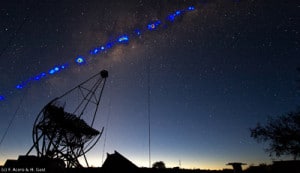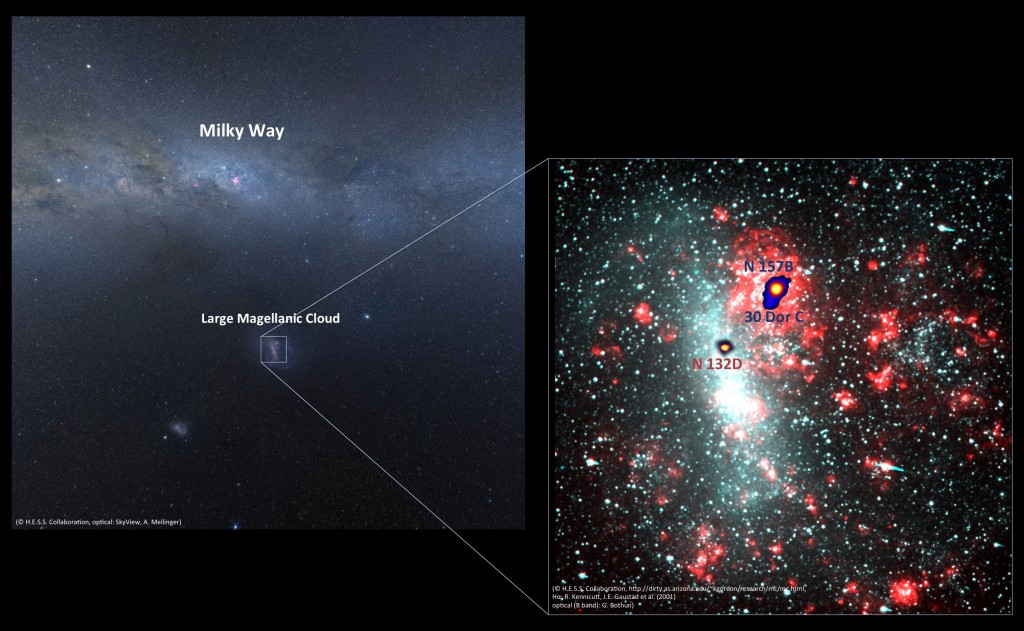Signals from another galaxy
Thanks to a network of state-of-the-art telescopes, an international team of researchers has just detected three sources of very high-energy gamma rays in another galaxy. This is a first that may tell us more about the origin of mysterious cosmic rays.
 Three sources of gamma radiation in the Large Magellanic Cloud, a satellite galaxy of the Milky Way: this is what the HESS observatory telescopes have just detected. This is no ordinary discovery, as it is the first time that these phenomena have been detected beyond our galaxy. These messages from the past (170,000 years ago) have a lot to tell us...
Three sources of gamma radiation in the Large Magellanic Cloud, a satellite galaxy of the Milky Way: this is what the HESS observatory telescopes have just detected. This is no ordinary discovery, as it is the first time that these phenomena have been detected beyond our galaxy. These messages from the past (170,000 years ago) have a lot to tell us...
Invisible to the human eye
Gamma rays? "Concentrated energy. A thousand billion times more energetic than visible light, these 'grains of light' are beyond X-rays, in a wavelength range invisible to the human eye," explains Matthieu Renaud, astrophysicist at the Montpellier Universe and Particles Laboratory.
To detect them, very special instruments are needed. "When they enter the Earth's atmosphere, these gamma rays emit a very faint flash of blue light (Cherenkov light) that the cameras of the HESS experiment's telescopes are able to detect." Located in Namibia, this network of four 13-meter-diameter telescopes, recently supplemented by a gigantic 28-meter telescope, is one of the most sensitive gamma-ray detection instruments in the world.
Mysterious cosmic radiation
The discovery has specialists excited because observing these rare phenomena could undoubtedly tell us a little more about the origin of "cosmic radiation," the flow of particles that seems to be present everywhere in the universe and in which the Earth is constantly bathed.
A particularly stubborn mystery: discovered in 1912 by Austrian physicist Victor Franz Hess, these extraterrestrial particles still haven't told us where they came from...
"We may be able to find out thanks to gamma rays. They are the best witnesses to extreme events in the universe: supernovae and their remnants, or pulsars and their wind nebulae, resulting from the evolution of massive stars. They are very good suspects in our investigation into the origin of cosmic rays,"explains Matthieu Renaud.
New horizons for astronomy
A pulsar nebula, a supernova remnant, and a "superbubble" (a structure formed by powerful winds from massive stars and their supernova explosions): these are the sources of the gamma rays that have just been observed with HESS.
Ten years ago, only a few very high-energy gamma sources were known to exist in the vastness of the sky. Today, there are more than a hundred, thanks to gamma-ray telescopes such as HESS II, the largest of them, which have recently opened up a new window of observation in astronomy.
